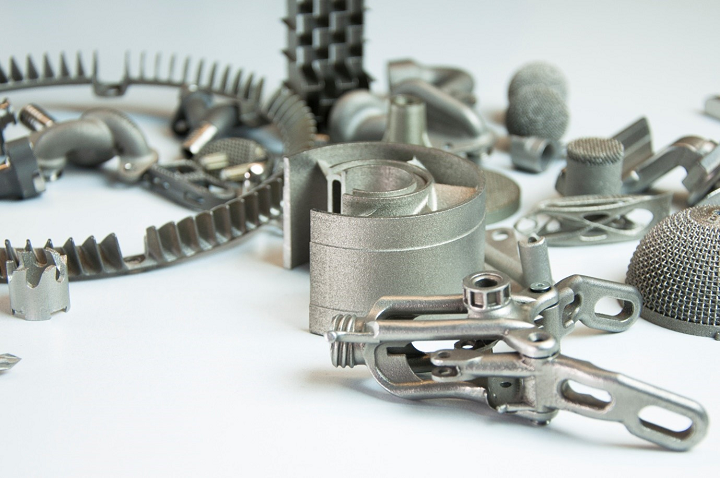BEAMIT and MTU Aero Engines have signed a Letter of Intent (LOI) to jointly develop metal 3D printed jet engines. Italian service bureau BEAMIT has deep experience with aviation, defense and aerospace, having bought leading service bureau 3T, partnered with GE, worked with Leonardo to industrialize 3D printing for defense and collaborated with its parent Sandvik on superalloys.
Now, BEAMIT will work with MTU to develop aero engines using 3D printing, with MTU performing the engineering and design and BEAMIT bringing in the 3D printing expertise. Together, they hope to “deliver high-performance components that are lighter, more durable, and more efficient” with a focus on Ti64 and aviation.
“We are excited to collaborate with MTU Aero Engines, a global leader in the aerospace industry, to push the boundaries of what’s possible with additive manufacturing. Our teams will work closely together to design and manufacture Titanium components that meet the rigorous quality and performance standards required for aerospace applications,” Mauro Antolotti, President and CEO of BEAMIT, said.
“We are always looking for ways to push the boundaries of what’s possible with new manufacturing technologies. This collaboration with BEAMIT will allow us to explore new ways to use additive manufacturing to create innovative, high-performance components that can help improve the efficiency and performance of our aircraft engines,” Dr. Karl-Heinz, Senior Manager of Additive Manufacturing Technology at MTU Aero Engines, stated.
BEAMIT is one of a handful of super service bureaus that have the capital, certifications and expertise to work with the toughest defense and aerospace customers. Along with firms such as Morf 3D, Materialise, Sintavia, MIMO Technik and others, the Italian company is striving to be a key contractor to work with Airbus, Boeing, Lockheed, GE, Pratt, and more on 3D printing. We know this will be an exclusive club and that these businesses can do extraordinarily well if they manage to keep up with the new space, satellite, defense, drone, aero engine and aviation companies out there.
I previously wrote an article on why BEAMIT-parent Sandvik has a winning strategy in 3D printing. By going from commodity steel to high-priced 3D printing powder, parts, finished parts, and qualified and specced parts for space and aero engine applications, Sandvik has radically altered the price per kilo of the core product that it sells. What’s more, in the process of establishing these business operations, it also made itself a potential leader in 3D printed cutting tools and more. Of all the legacy large firms that have entered the 3D printing market, so far I think that Sandvik has done the best job.
MTU is one of only a few companies worldwide that can make aero engines. Rolls Royce, GE, Pratt and only a few others can do this kind of work. In Europe, the big companies are just Saffran and MTU really. MTU is a partner for GE on the GEnx, GE90, and GE9x. It also works with Engine Alliance, International Aero Engines, Pratt & Whitney and others. These companies collaborate, compete fiercely, and are in joint ventures with each other to spread costs and risks while developing bleeding edge technology. MTU is a $4.6 billion group, which may sound like a lot but Pratt is a $16 billion revenue business unit within the behemoth Raytheon, which has $64 in revenue.
Developing aviation components and partnering on new engines is very expensive, but the opportunities out there are expansive. The industry is large and also very difficult to play a part in. By stepping up together, the two firms hope to be able to make cutting-edge, weight-saving components to drive the future of aviation. In low-pressure turbines; maintenance, repair, and overhaul; and many fields, MTU will seek to lead and gain on others who also wish to excel in additive. MTU´s success is important to Germany, while BEAMIT is important to developing Italy’s prowess in additive and Sandvik is important to Sweden. This should all help the firms enormously in cross-border defense and aerospace deals, as well.
Subscribe to Our Email Newsletter
Stay up-to-date on all the latest news from the 3D printing industry and receive information and offers from third party vendors.
You May Also Like
3D Printing News Briefs, April 27, 2024: Research, Digital Dentistry, Cycling, & More
We’re starting today’s 3D Printing News Briefs with some research into 3D printed luminescent quantum-dot polymer architectures and free-form laser beam shaping, and then on to an open source 4-axis...
HP & INDO-MIM Collaborate to Boost Metal 3D Printing in India
HP Inc. and INDO-MIM, a US- and India-based supplier of metal injection molding (MIM) powders and contract manufacturer, have announced that the two companies will collaborate to accelerate additive manufacturing...
3D Printing News Briefs, February 17, 2024: Shot Blasting, Service Bureaus, & More
In today’s 3D Printing News Briefs, we’re starting out with post-processing, as SKZ Würzburg is using a shot blast system from AM Solutions for its research. Moving on to business,...
3D Printing News Unpeeled: Not That Kind of Organ 3D Printing
GKN Aerospace will create a 150 jobs in Trollhattan Sweden with an investment of $60 million part of which comes from the Swedish Energy Agency’s Industriklivet initiative. The investment will...
































